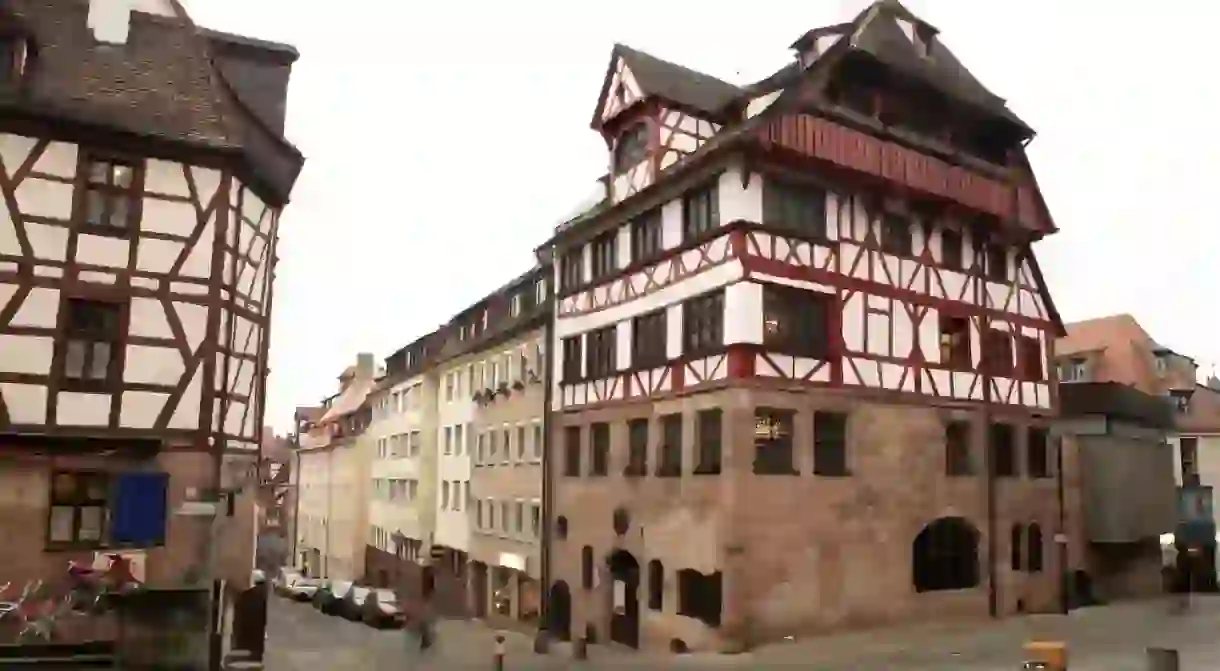Essential Artwork By Albrecht Durer

Born in Nuremberg, Albrecht Durer is considered one of the most talented German artists, as well as one of the leading figures of the Northern Renaissance. Like many of his contemporaries in Italy, Durer was multi-talented; he was not only adept at oil and watercolor painting, but also ink drawing, engraving and writing on topics such as geometry, architecture, and engineering.
Self-portrait
Painted in early 1500 – just before his 29th birthday – Self Portrait has become the most iconic image of the German artist. By choosing a pose in which he directly faces the viewer, Durer presents himself in monumental fashion – during the period, such a pose was typically reserved for renderings of Jesus Christ. The painting’s symmetry and dark tones, as well as Durer’s hand gesture (as if in the act of giving a blessing) are all similar to religious portraits of the era.
Young Hare
Durer’s Young Hare is regarded as an incredibly important piece of observational art. This masterpiece is one of the first to deal with natural studies. Durer masterfully captured the hare with a lifelike, almost photographic accuracy. The subject was certainly not an easy one to paint, especially when considering the texture and multi-colored nature of the hare’s fur. Durer not only created a detailed scientific rendering of the hare, he also managed to give the animal an individual expression.
Adam and Eve
Adam and Eve reveals Durer’s fascination with the idea of the perfect human form and its relation to proportion and measurements, a subject that was especially popular in Renaissance Italy. In fact, towards the end of his life, he wrote several books outlining his theories on the matter. The poses of Adam and Eve are idealized and symmetrical – each figure puts weight on one leg while the other leg is bent, and each has one arm angled slightly upward. Also making an appearance in this engraving – a medium that Durer mastered by the early 16th century – are four animals representing the four medieval temperaments: the cat is choleric, the rabbit sanguine, the ox phlegmatic and the elk melancholic.
Praying Hands
Praying Hands is arguably Durer’s best-known painting. Done with ink on blue paper, the drawing is simple – it shows two male hands in the act of prayer. Durer completed it as a sketch for a painted altarpiece, which was subsequently destroyed by a fire in 1729. In the modern era, Praying Hands has become an international symbol of piety and is surely one of the most reproduced images to date.
The Great (Large) Piece of Turf
Similar to Young Hare, this landmark work is important because it is a masterpiece of natural studies during a time when realism had yet to arrive in the field of botanic illustration. In this painting, Durer meticulously depicted a collection of common plants – including all the roots, buds and leaves – while sparing no detail. Among the species of plants identified in the work are daisies, dandelions and yarrow.
Saint Jerome in his Study
Saint Jerome in His Study was completed in 1514 and shows the scholar-saint sitting behind a desk, engrossed in his work. Yhis copperplate engraving is loaded with symbolism. On the corner of the table is a cross, representing resurrection, and to the left of it on the window sill lies a skull, symbolizing death. The lion in the foreground is connected to the traditional iconography of Saint Jerome, while the dog lying nearby represents loyalty and is a recurring animal in Durer’s works.
The Four Apostles/The Four Holy Men
The last of his large works, The Four Apostles is a panel painting that Durer finished in 1526. By this point in his life, Durer had returned to his hometown of Nuremberg. He wanted to show his respect for the city council by donating a work that would serve as an example of good governance (a practice made common by artists in Italy). He did so with this larger-than-life painting of the four apostles, each recognizable thanks to his iconography: John the Evangelist (open book), Peter (keys), Mark (scroll) and Paul (sword and closed book). ‘The Four Apostles’ is on display at the Alte Pinakothek in Munich, despite efforts by the city of Nuremberg to have it returned to its original place.
Albrecht Durer the Elder with a Rosary's
Madonna and Child
Martyrdom of the Ten Thousand
This oil painting was commissioned by Frederick III for the All Saints’ Church in Wittenberg, Germany. This altarpiece portrays the legend of the ten thousand Christians who were killed on Mount Ararat in a massacre carried out by Persian King Saporat at the behest of the Roman Emperors Hadrian and Antonius. Prior to this undertaking, Durer had never tackled a composition with so many figures. He even included himself in the middle of the scene, as the figure dressed in black holding a staff.
Check out these tours and excursions in Germany.













